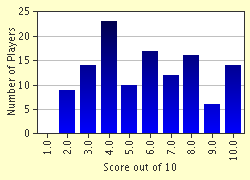Quiz Answer Key and Fun Facts
1. What was the "foolish club?"
2. At the conclusion of the 1969 season, the AFL folded in style with the Kansas City Chiefs defeating the Minnesota Vikings 23-7 in the Super Bowl, giving both leagues two wins apiece in the game. After this fourth Super Bowl, who led all AFL players in career Super Bowl scoring?
3. I was an AFL Rookie of the Year, averaging 17.5 yards per completed pass, and I took my young team to an upset over the team who eventually won the Super Bowl that season. Then I injured my shoulder and, for all intents and purposes, my career was over. Who am I?
4. What was the significance of the words, "We'll kick to the clock?"
5. When the brand-new Miami Dolphins played their first game in 1966, how did they get their existence off to an auspicious start?
6. Officially, we were quarterback and coach, but we were more like father and son. We won more titles together than any other AFL quarterback-coach duo. Before the AFL, we were in college together as quarterback and coach. We also presented each other for our inductions into the Pro Football Hall of Fame. Which quarterback and coach are we?
7. Which original AFL team played in its original stadium longer than any other team in the league?
8. How did the "JV-5" figure into AFL history?
9. I made history in 1964 as American pro football's first soccer-style kicker. Who am I?
10. Besides sending his Kansas City Chiefs teams to two of the first Super Bowls, what major contribution did their owner Lamar Hunt make to the game?
Source: Author
d2407
This quiz was reviewed by FunTrivia editor
Nightmare before going online.
Any errors found in FunTrivia content are routinely corrected through our feedback system.

